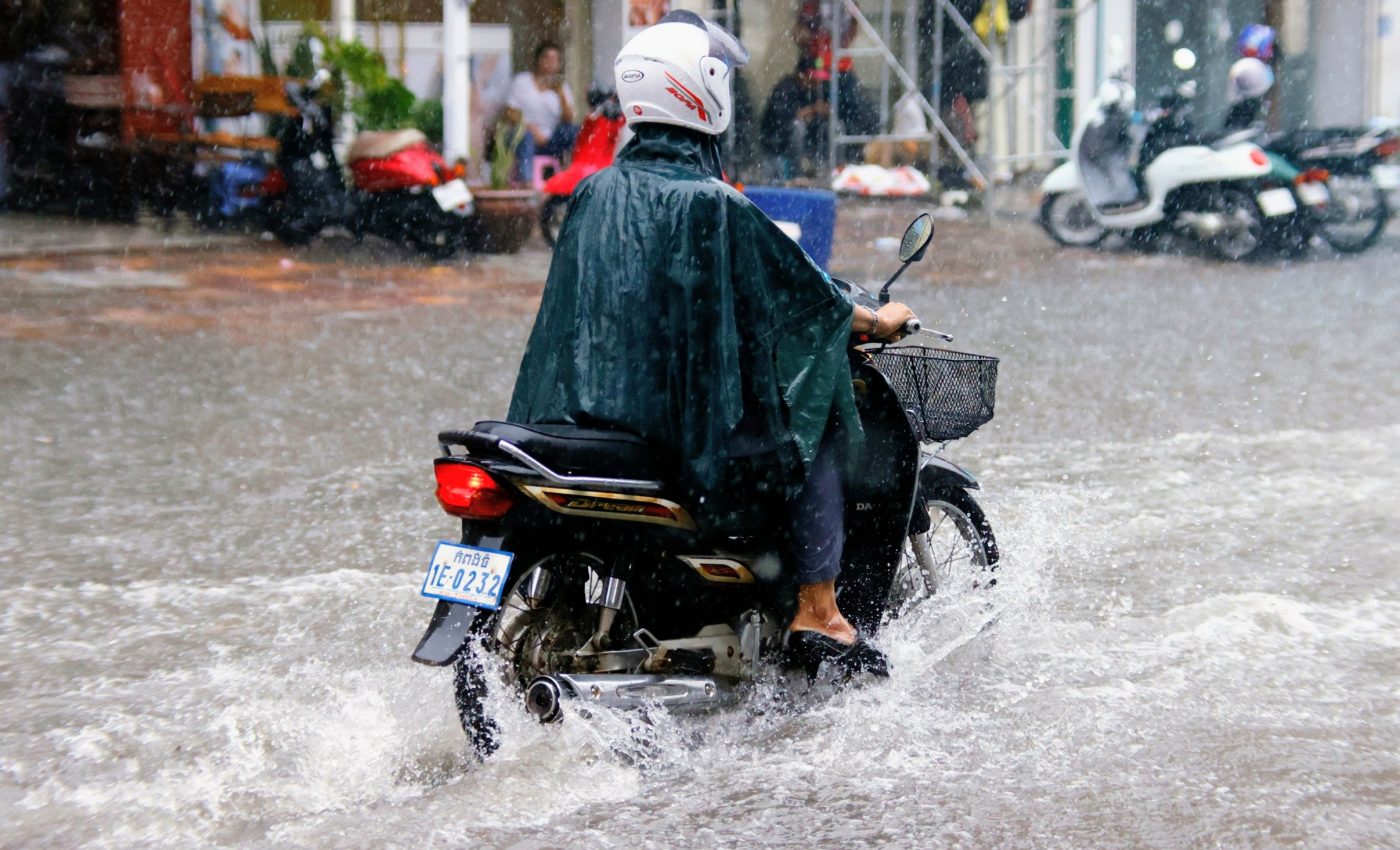
Why future monsoon storms will become much more dangerous
Future monsoon storms over South Asia may pour much more rain even as their winds weaken, according to new research from the University of Reading.
For the strongest of these storms, rainfall from a single event could climb by about 28 percent. That jump appears once global warming climbs several degrees above preindustrial levels.
These changes would reshape the summer monsoon that feeds crops and water supplies for more than a billion people across India, Bangladesh, Sri Lanka, and nearby countries.
Models also suggest that more of these storms will travel farther inland. That shift would raise flood risk in western India and in regions that today see them only rarely.
How monsoon systems work
Monsoon low pressure systems, traveling swirls of air that form within the summer monsoon winds, carry enormous amounts of rain into the Indian subcontinent.
A detailed study has found that these systems are linked to more than half of Indian monsoon rainfall.
The research was led by Dr Kieran Hunt, a climate scientist at the University of Reading (UR). His research focuses on how monsoon storms organize, move, and respond to human driven warming.
Heavier storms in heat
To explore the future, Hunt and colleagues used thirteen climate models, complex computer programs that simulate the atmosphere under different greenhouse gas levels.
These tools showed that storm winds become about 10 percent weaker once global warming reaches roughly 5.4 degrees Fahrenheit above preindustrial conditions.
“How can weaker storms produce more rain?” said Dr Hunt. He explained that extra humidity ahead of a storm can be swept into its core.
In the new analysis the team examined storms at different warming levels. At 3.6 degrees Fahrenheit of global warming, rainfall from a typical storm rises by roughly 10 percent compared with conditions before industrialization.
The same experiments showed that the number of monsoon storms increases by about 15 percent when global warming reaches 3.6 degrees Fahrenheit.
Across different patterns of winds and moisture, the exact increase varies from model to model.
Why monsoon moisture matters
The Clausius-Clapeyron relationship (CCR), a rule saying warmer air can hold more water vapor, helps explain why rainfall intensifies as the planet heats.
An influential assessment of global monsoons concluded that extreme monsoon rains are likely to grow stronger in a warming climate.
As the region warms unevenly, the meridional moisture gradient, the north south contrast in low level humidity, becomes sharper between southern India and the hotter land to the north.
When a storm approaches, winds ahead of its center drag this moisture into the rain band so each system can wring out more water.
Differences in the boundary layer
The boundary layer, the lowest slice of air in direct contact with the ground, behaves differently from the air higher up in these simulations.
Near the surface, storm winds weaken much less, so friction still pulls moist air inward and keeps rainfall heavy close to the center.
Observational research has shown that low pressure systems account for most extreme rain events over central India, including many of the heaviest downpours.
If these storms now tap into stronger humidity gradients, future extreme rainfall could become more intense and more frequent in those heartland regions.
Storms moving farther inland
In the simulations, storms survive longer over land, a change described as longer post landfall duration, the time between landfall and final decay.
This lifetime over land grows between 2.7 and 3.6 degrees Fahrenheit of warming, so more systems reach central and western India before they fade.
“We found four different pathways the monsoon could take as the world warms, but the message is the same across all of them,” said Professor Andy Turner, a co-author of the study.
He emphasized that wetter, more frequent storms are likely to reach places that rarely see such systems now.
Several futures show more storms than today affecting regions such as Sri Lanka and Bangladesh that now sit near the edge of storm tracks.
In the most active storyline, shifts in large scale winds bring disturbances from Southeast Asia, raising the storm count by about 36 percent.
Rising risks for communities
Recent research shows that many severe floods tied to the South Asian monsoon occur on days when low pressure systems are active, especially over central and western India.
If future storms become more numerous, wetter, and longer lived over land, the chances of damaging floods and landslides will rise in many communities.
Work across monsoon regions has built a global picture of low pressure systems, showing similar storms shaping rainfall in Africa and East Asia.
That wider view supports the idea that even modest shifts in these storms can ripple through food security, river management, and urban infrastructure.
Preparing for the future monsoon
There is still uncertainty in how winds, humidity, and storm tracks will combine in the decades ahead, because different models follow different storylines.
For communities across South Asia, the message is that planning for the future monsoon means preparing for heavier rains and more frequent storms in unfamiliar places.
Understanding how these wetter but weaker systems behave will be central to designing early warnings, flood defenses, and farming choices that can keep pace with a changing climate.
The study is published in the Journal of Climate.
—–
Like what you read? Subscribe to our newsletter for engaging articles, exclusive content, and the latest updates.
Check us out on EarthSnap, a free app brought to you by Eric Ralls and Earth.com.
—–













